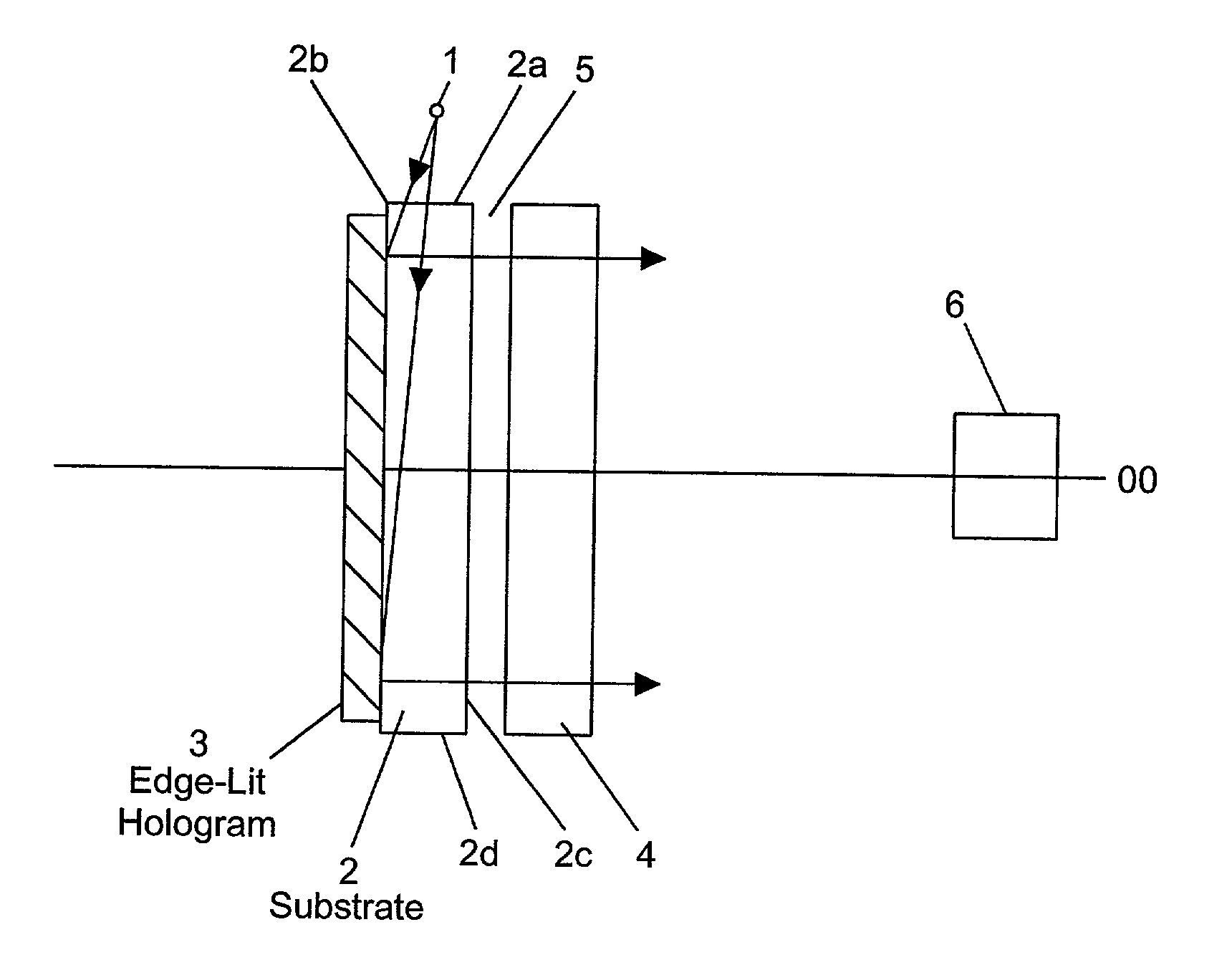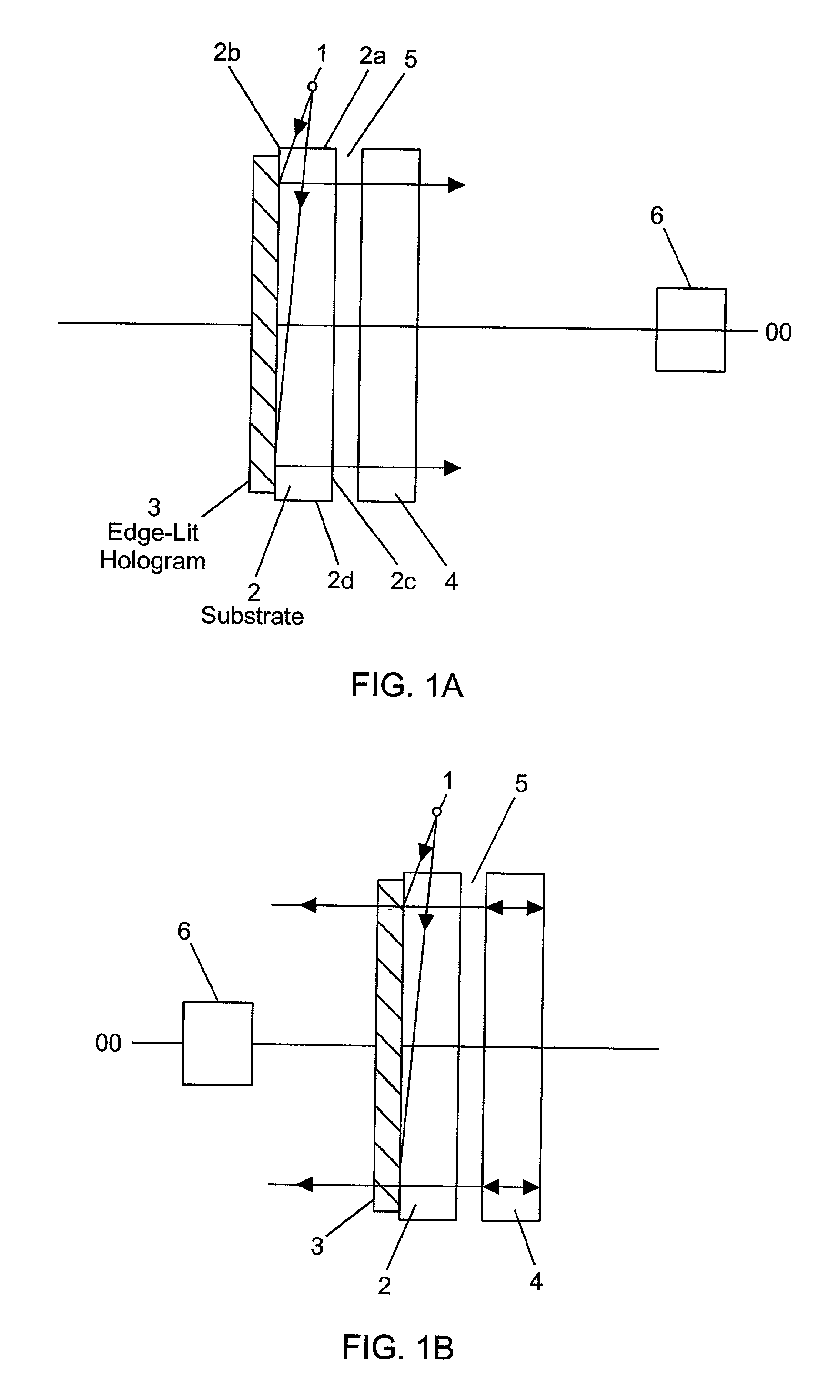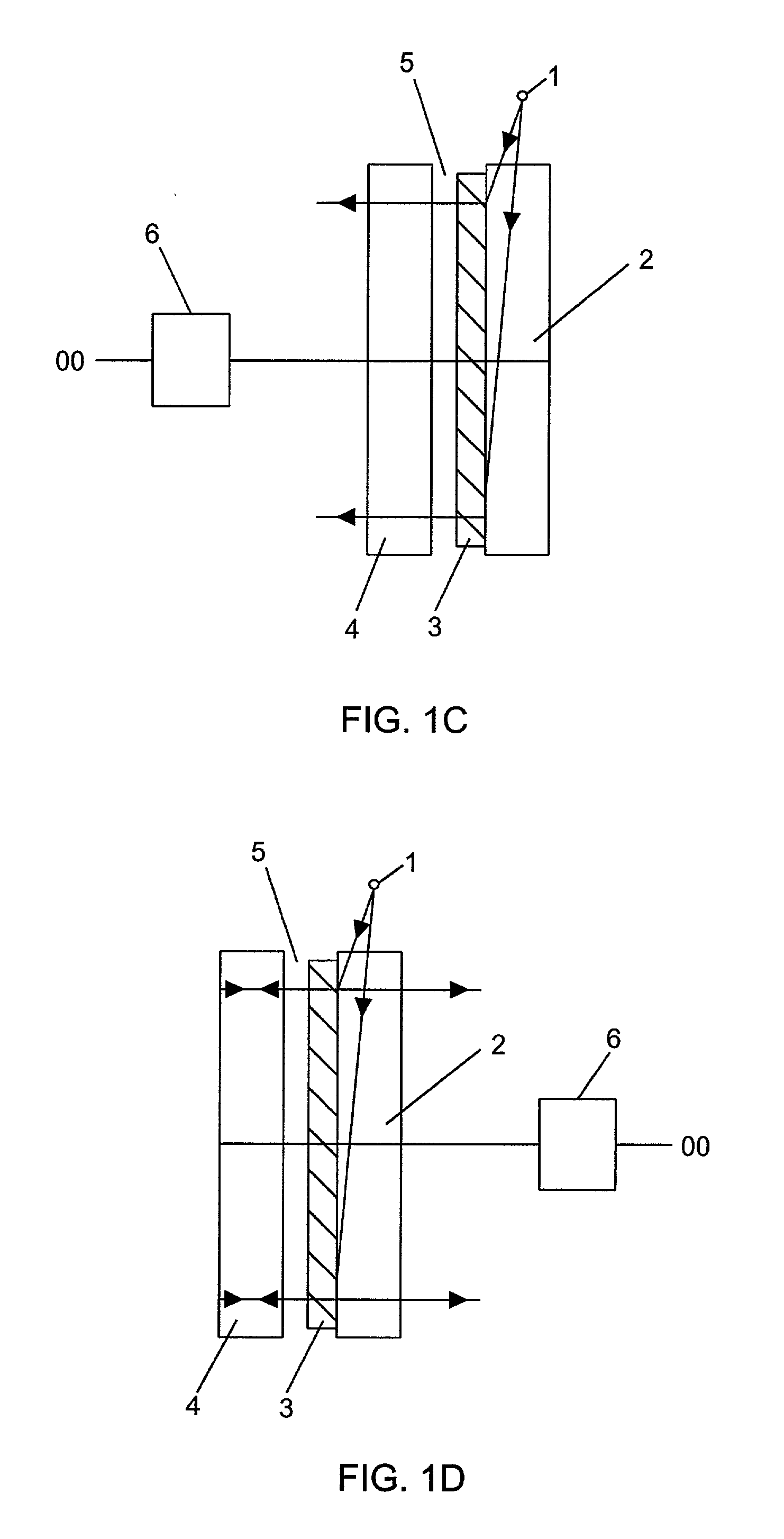Holographic light panels and flat panel display systems and method and apparatus for making same
a technology of flat panel display and light panel, applied in the field of holographic light, can solve the problems of inability to meet the needs of the user,
- Summary
- Abstract
- Description
- Claims
- Application Information
AI Technical Summary
Benefits of technology
Problems solved by technology
Method used
Image
Examples
case 1
Index Matching: Case 1
[0087] In U.S. application Ser. Nos. 08 / 594,715, 08 / 546,709 and 08 / 011,508, Applicants teach that for Case 1 recording situations, the highest quality edge-lit holograms can be achieved by carefully matching the index of refraction of the recording medium with the index of refraction of its associated substrate. The degree of matching required is a function of the steepness of the reference beam angle and the light transmission into the recording medium, which is derived by combining the well known Fresnel reflection equations with Snell's Law at the substrate-recording medium interface. In practice, the best index matching in this case is achieved by choosing a substrate whose index of refraction is equal to or slightly less than the index of refraction of the recording medium. For example, in accordance in with this index matching technique, Applicants have discovered that BK10 glass works well with DuPont holographic recording material designated HRF 352. Th...
case 2
Index Matching: Case 2
[0089] In U.S. application Ser. Nos. 08 / 594,715, 08 / 546,709 and 08 / 011,508, Applicants also teach that for Case 2 recording situations, it is best to use a “gradient-type” index matching region at the interface between the substrate and the recording medium. This type of indexing matching region can be achieved during the recording of edge illuminated holograms when using photopolymer recording materials which contain migratory monomers. During such recording process, applicants have discovered that under particular conditions the action of the signal wave (object beam) can increase the refractive index of the recording layer near the boundary between the recording material and the substrate by attracting migratory monomer toward this boundary. This increases the ability of the reference wave to couple into the recording medium when it is incident at an angle close to grazing incidence. At locations of high reference signal strength in the recording medium, the...
PUM
| Property | Measurement | Unit |
|---|---|---|
| angle | aaaaa | aaaaa |
| critical angle | aaaaa | aaaaa |
| angles of incidence | aaaaa | aaaaa |
Abstract
Description
Claims
Application Information
 Login to View More
Login to View More - R&D
- Intellectual Property
- Life Sciences
- Materials
- Tech Scout
- Unparalleled Data Quality
- Higher Quality Content
- 60% Fewer Hallucinations
Browse by: Latest US Patents, China's latest patents, Technical Efficacy Thesaurus, Application Domain, Technology Topic, Popular Technical Reports.
© 2025 PatSnap. All rights reserved.Legal|Privacy policy|Modern Slavery Act Transparency Statement|Sitemap|About US| Contact US: help@patsnap.com



